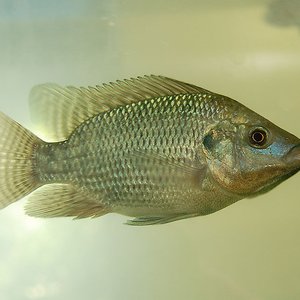Aquaculture has flourished in the central region of Viet Nam in recent years, but is now encountering several problems, including a shortage of shrimp fry and polluted groundwater from inadequate waste treatment.
Although farmers have dramatically increased their incomes, disease outbreaks among contaminated shrimp, particularly those that are purchased unquarantined, have caused mass deaths and polluted groundwater.
However, the sector continues to grow as farmers apply advanced farming techniques and raise a variety of aquatic species, reports Viet Nam News.
Central Thua Thien – Hue Province, for example, increased its aquaculture area from 5,402ha in 2006 to 5,800ha last year. Farmers in the province, which has 22,000ha of lagoons, now farm black-tiger shrimp, white-leg shrimp, crab, sweet snails and bivalve molluscs, as well as marine fish and freshwater fish.
In Huong Tra District, farmers are piloting a production model for black-tiger shrimp, crab and mullet fish under the support of the province's Consultative and Research Centre on Natural Resources Management.
In Phu Yen Province, the area under aquatic cultivation increased by 90ha from 2006 to 2010, with output rising 2.4 times. The production value of aquaculture reached VND246.7 million per hectare in 2010, up VND8.7 million compared to 2006, according to Phu Yen Province's Department of Agriculture and Rural Development. Farmers in the province are raising a variety of aquatic species, including mullet, seabass, snapper and bivalve molluscs. Raising lobsters in cages has become popular in Phu Yen as the species now sells for VND1.2-1.4 million ($57-66) a kilogram. Phu Yen has more than 12,000 lobster cages, twice the number compared to last year, accounting for nearly 90 per cent of the province's aquatic farming cages. The province's aquaculture sector earned VND2.44 billion last year, or 34.6 per cent of the province's agro-forest and seafood income.
A shortage of shrimp fry is affecting growth, according to Vo Thi Tuyet Hong, head of Thua Thien – Hue Province's aquaculture sub-department. She said hatcheries could only meet 10-20 per cent of demand in the province. In Thua Thien – Hue, the number of hatcheries fell from 29 in 2005 to 12 in 2009. The drop occurred because of several factors, including inclement weather and competition from other breeding centres in the south. Also, the rapid development of aquaculture without proper zoning in many localities has contributed to environmental pollution, leading to disease outbreaks among various species. Last year in Thua Thien – Hue, disease broke out in shrimp ponds covering 1,000 hectares of a total of 3,600ha of ponds.
Quang Nam Province, for the same reasons, saw its shrimp output fall by 1,130 tonnes in the first few months of last year. Ngo Tan, deputy director of Quang Nam Province's Department of Agriculture and Rural Development, said the shrimp-fry shortage and untreated waste water had contributed to lower output. Province officials are taking a number of steps to address these problems with an aim to create sustainable production.
Le Truong Luu, deputy chairman of the Thua Thien – Hue People's Committee, said his province had targeted an annual aquaculture output of 20,000 tonnes by 2015, up 7,000 tonnes compared to the present. The province wants to give priority to brackish-water aquatic species, including black-tiger shrimp, crabs and bivalve molluscs. To solve the aquatic-fry shortage, the province will set up new aquatic-breeding centres and upgrade existing ones, including a 30-ha shrimp-breeding centre in Phong Dien District. The shrimp fries will be used for farming in ponds in sandy areas. Thua Thien – Hue will also carry out other projects, including improving the capacity of aquatic officials and veterinary forces and setting up systems to monitor disease outbreaks and water pollution. In addition, to protect the environment, mangrove trees will be planted in coastal areas where aquaculture breeding occurs.
Quang Nam Province, which does not have large lagoons like Thua Thien – Hue, has more than 4,700ha devoted to fresh-water aquatic cultivation, including 3,879ha of reservoirs. Last year, the area under brackish-water aquaculture in Quang Nam reached 2,130ha, with annual output of 8,170 tonnes. The province plans to set up 10 disease-free shrimp farming zones covering an area of 30ha each by the year-end. It has also been encouraging farmers to invest in tra catfish cultivation and breed more freshwater-fish species. In addition, by 2015, more than 50 per cent of aquaculture areas in Quang Nam are expected to apply national standards of food safety and hygiene. Tan said his department would work with agencies to improve the quality of aquatic produce and inspection of aquatic-breeding centres and animal-feed producers. The department has also called on investors from all economic sectors to invest in the aquaculture sector
[Viet Nam News]







